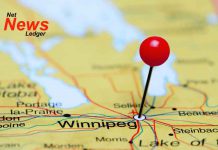Residents of Kitchenuhmaykoosib Inninuwug (KI), Bearskin Lake First Nation, Sachigo Lake First Nation, Kasabonika First Nation, and Sandy Lake First Nation are waking up to a sunny but chilly morning. The weather conditions observed at the Big Trout Lake Airport, serving these communities, indicate a crisp start with sunny skies expected to shift to mixed conditions later today.
Today’s Weather Overview
Current Conditions
As of 7:00 AM CDT, the temperature stands at a frosty -6.6°C with almost saturated air at 99% humidity, and a slight breeze from the north-northeast at 4 km/h. Despite the sunshine, the wind chill factor is making it feel closer to -9°C. Visibility is clear at 16 kilometers, indicating a pleasant but cold morning across these northern communities.
Forecast
Expected Conditions
Sunday, April 14: Today will start sunny and transition to a mix of sun and cloud by noon. Winds will remain light, up to 15 km/h, but with a significant morning wind chill of -11°C. The afternoon high is expected to reach plus 5°C, and the UV index will be moderate at 4.
Tonight: The evening will start with just a few clouds, but cloudiness will increase after midnight. Light winds will continue, and temperatures will drop to -7°C, with an overnight wind chill dipping to -13°C.
Monday, April 15: Monday will be mainly cloudy with a 30% chance of flurries in the late morning and afternoon. Winds will shift to the northwest at 30 km/h by late morning, keeping the wind chill around -13°C in the morning and reaching a high of only plus 5°C. The UV index will be slightly lower at 3.
Monday Night: The sky will clear, but it will remain cold with a low of -9°C.
Wardrobe Recommendations
Given the very cold temperatures and wind chill factors, residents should dress in multiple layers, including thermal wear, a heavy coat, insulated boots, hats, and gloves. It is crucial to protect against the wind and cold, especially in the morning and late evenings.
Weather Trivia
Did you know? The remote northern location of these First Nations communities contributes to their unique climatic experiences, which can include rapid changes in temperature and conditions, particularly as seasons shift from winter to spring.







